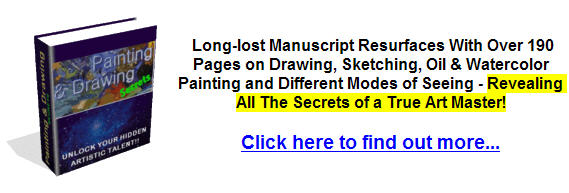How to Paint People Ears, Noses and Hair
Ears, noses and hair can be challenging to paint realistically in portraits. In this portrait painting lesson, we are going to look indepth into the various elements of the human face. Ears: Artists often take the easy way out with ears and cover them up with hair, which is a great pity as ears can add a lot of character to a portrait. Keep things simple, in order to keep the focus on the face. Add some red to the flesh tone, as there is a lot of blood flow in the area. A good way to remember the shapes of an ear is by asking “y?” The “?” creates the outer shape of the ear with the point being the earlobe and the “y” creates the shapes of the squiggly bits on the inside. The position of ears is not straight, so draw ears at a slight angle. Their placement is in the middle third of the face, with the tops aligned with the brow ridge and the bottom aligned with the base of the nose. Seen from profile, the ears are directly behind the jaw. Most shapes in ears are round, so treat the shapes in the ears as organic cylinders when shading. Because of the overlapping of various parts of the ear, you will need to create extreme shadows and highlights. Nose: The beginning of the nose meets the forehead and the brow in a wedge shape, similar to a keystone. It is narrow at the bridge and widens as it travels down the face. When drawing or painting a nose, start by sketching the boundaries of the shape – draw two curved, diagonal lines to represent the keystone shape at the top, mark out the base of the nose and the indentations on either side of the bridge. Draw the triangular shape that makes up the bottom of the nose, and then focus on the bulbous, rounded tip, using curved, rounded lines. Sketch in the wing-shaped nostrils on either side of the tip, and don’t forget the shape of the shadow that the nose casts on one of the cheeks (if the lighting comes from a side). Use colors like burnt sienna, burnt umber, ultramarine, permanent rose and white to create the skin tones for your nose (or the same colors that you used for the rest of the face) and then bring other colors into the mix: The nose is usually very reflective and picks up colors from clothing, scenery, etc, so don’t be afraid to use greens and blues as well. Hair: A common mistake that artists make when they first try to paint hair is in thinking that they need to paint every strand of hair. When painting hair, start by applying the darkest shades of color that you see. Next, mix a lighter shade of this color (using white, yellow or orange – it’s really up to you) and paint in the highlights. Always paint with the direction of the growth of the hair, using your paintbrush to create texture and the illusion of individual hairs. After you’ve painted the initial highlights and lowlights, step back from your painting and decide what you think is missing. Mix some mid-tones (and brighter highlights, if you wish) and apply these to the painting until you feel that the painting is complete. | |
|


Master the Colours DVD...

|
Although every attempt has been made to make information as accurate as possible, we are not responsible for any errors that may appear.
© Copyright 2015, OilPaintingTechniquesLessons.com. All Rights Reserved.





